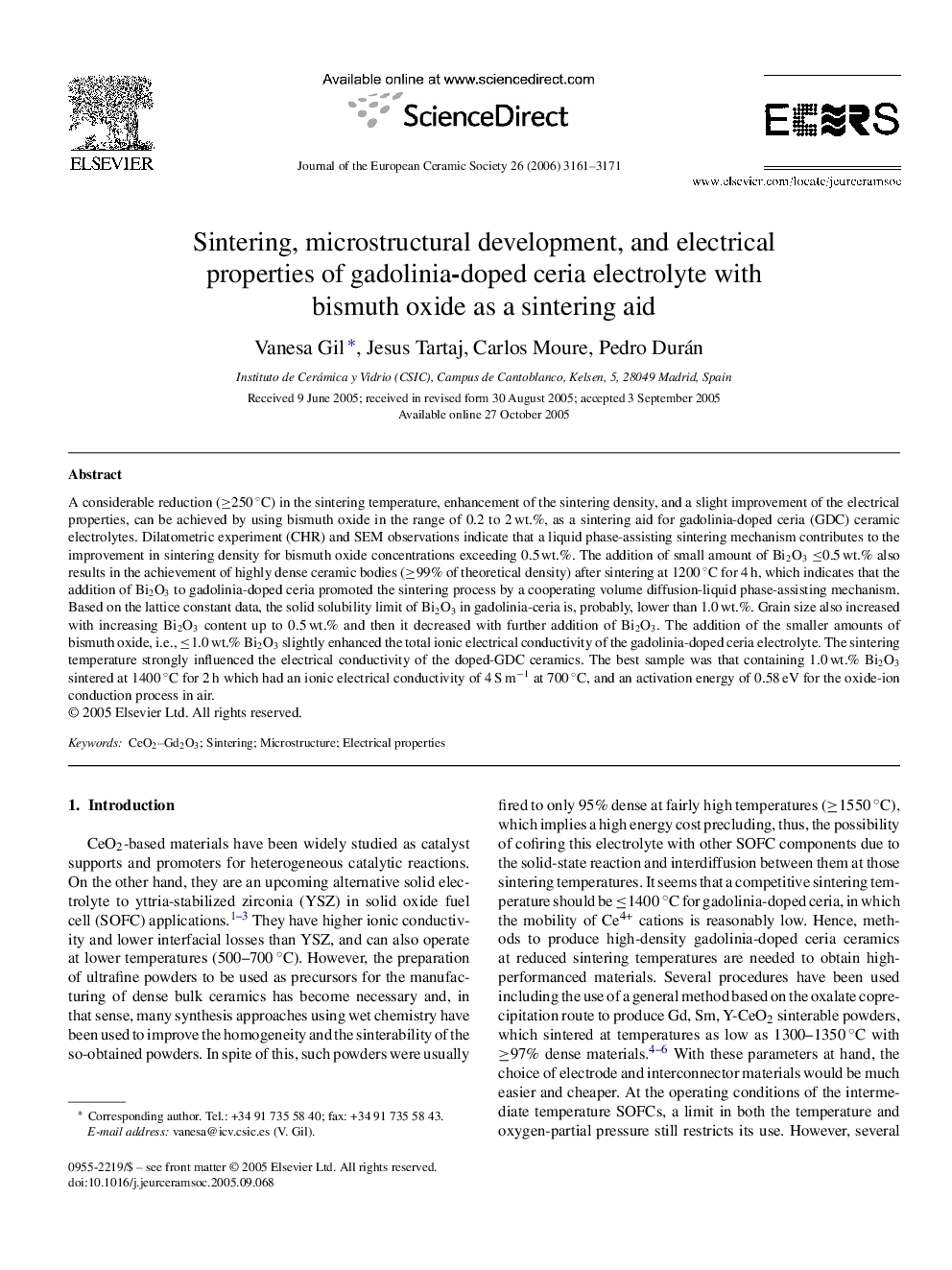| کد مقاله | کد نشریه | سال انتشار | مقاله انگلیسی | نسخه تمام متن |
|---|---|---|---|---|
| 1477347 | 991180 | 2006 | 11 صفحه PDF | دانلود رایگان |

A considerable reduction (≥250 °C) in the sintering temperature, enhancement of the sintering density, and a slight improvement of the electrical properties, can be achieved by using bismuth oxide in the range of 0.2 to 2 wt.%, as a sintering aid for gadolinia-doped ceria (GDC) ceramic electrolytes. Dilatometric experiment (CHR) and SEM observations indicate that a liquid phase-assisting sintering mechanism contributes to the improvement in sintering density for bismuth oxide concentrations exceeding 0.5 wt.%. The addition of small amount of Bi2O3 ≤0.5 wt.% also results in the achievement of highly dense ceramic bodies (≥99% of theoretical density) after sintering at 1200 °C for 4 h, which indicates that the addition of Bi2O3 to gadolinia-doped ceria promoted the sintering process by a cooperating volume diffusion-liquid phase-assisting mechanism. Based on the lattice constant data, the solid solubility limit of Bi2O3 in gadolinia-ceria is, probably, lower than 1.0 wt.%. Grain size also increased with increasing Bi2O3 content up to 0.5 wt.% and then it decreased with further addition of Bi2O3. The addition of the smaller amounts of bismuth oxide, i.e., ≤1.0 wt.% Bi2O3 slightly enhanced the total ionic electrical conductivity of the gadolinia-doped ceria electrolyte. The sintering temperature strongly influenced the electrical conductivity of the doped-GDC ceramics. The best sample was that containing 1.0 wt.% Bi2O3 sintered at 1400 °C for 2 h which had an ionic electrical conductivity of 4 S m−1 at 700 °C, and an activation energy of 0.58 eV for the oxide-ion conduction process in air.
Journal: Journal of the European Ceramic Society - Volume 26, Issue 15, 2006, Pages 3161–3171